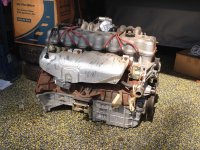about $500I wish I could get your setup. There are no aluminum heads or crossflow heads available here in the states. I wonder how much it would cost to ship one to me
Keep a look out on my page, I am doing stock of my used parts at the moment and ill more than likely be offering free crossflow heads if you purchase a cam, lifters, springs, retainers and intake manifold.


